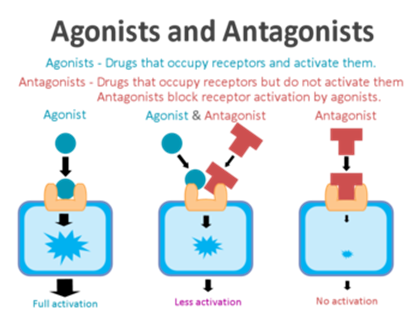The following order has been written for your client: morphine 1 mg intravenously (IV) every 2 hours as needed for pain. Which of these is true regarding this order?
If the client is still in severe pain 1 hour after the last dose, the nurse can administer an additional 1 mg of morphine.
Morphine will be given enterally.
Every two hours, the nurse will assess the need for morphine to determine if 1 mg IV should be given.
Morphine will be given every 2 hours.
The Correct Answer is C
The order states that morphine 1 mg should be given intravenously (IV) every 2 hours as needed for pain. This means that the nurse should assess the client's pain level every 2 hours and determine if 1 mg of morphine IV is needed to manage the pain.
Option A is incorrect because the order specifies that morphine should be given every 2 hours as needed, not every hour.
Option B is incorrect because the order specifies that morphine should be given intravenously (IV), not enterally.
Option D is incorrect because the order specifies that morphine should be given as needed for pain, not automatically every 2 hours.

Nursing Test Bank
Naxlex Comprehensive Predictor Exams
Related Questions
Correct Answer is D
Explanation
The statement by the client that indicates an understanding of the medication therapy for Parkinson's disease is that a levodopa/carbidopa combination is used to improve motor function ⁵. Levodopa is converted into dopamine in the brain, helping to control movement ¹. Carbidopa prevents the breakdown of levodopa in the bloodstream so more levodopa can enter the brain ¹.
Option A is incorrect because medication therapy cannot slow the progression of Parkinson's disease.
Option B is incorrect because skipping a dose if the client needs to drive is not recommended.
Option C is incorrect because if dyskinesias occur, the client should not stop the medication immediately without consulting their physician.

Correct Answer is B
Explanation
An agonist is a molecule that can bind to and activate a receptor to induce a biological response ³. Agonists can be endogenous molecules, such as hormones or neurotransmitters, or medications that mimic the action of endogenous agonists ³.
Option A is incorrect because an agonist does not prevent receptor activation by other medications.
Option C is incorrect because an agonist does not increase the affinity of a receptor for a different medication.
Option D is incorrect because an agonist does not both block and activate a receptor.

Whether you are a student looking to ace your exams or a practicing nurse seeking to enhance your expertise , our nursing education contents will empower you with the confidence and competence to make a difference in the lives of patients and become a respected leader in the healthcare field.
Visit Naxlex, invest in your future and unlock endless possibilities with our unparalleled nursing education contents today
Report Wrong Answer on the Current Question
Do you disagree with the answer? If yes, what is your expected answer? Explain.
Kindly be descriptive with the issue you are facing.
